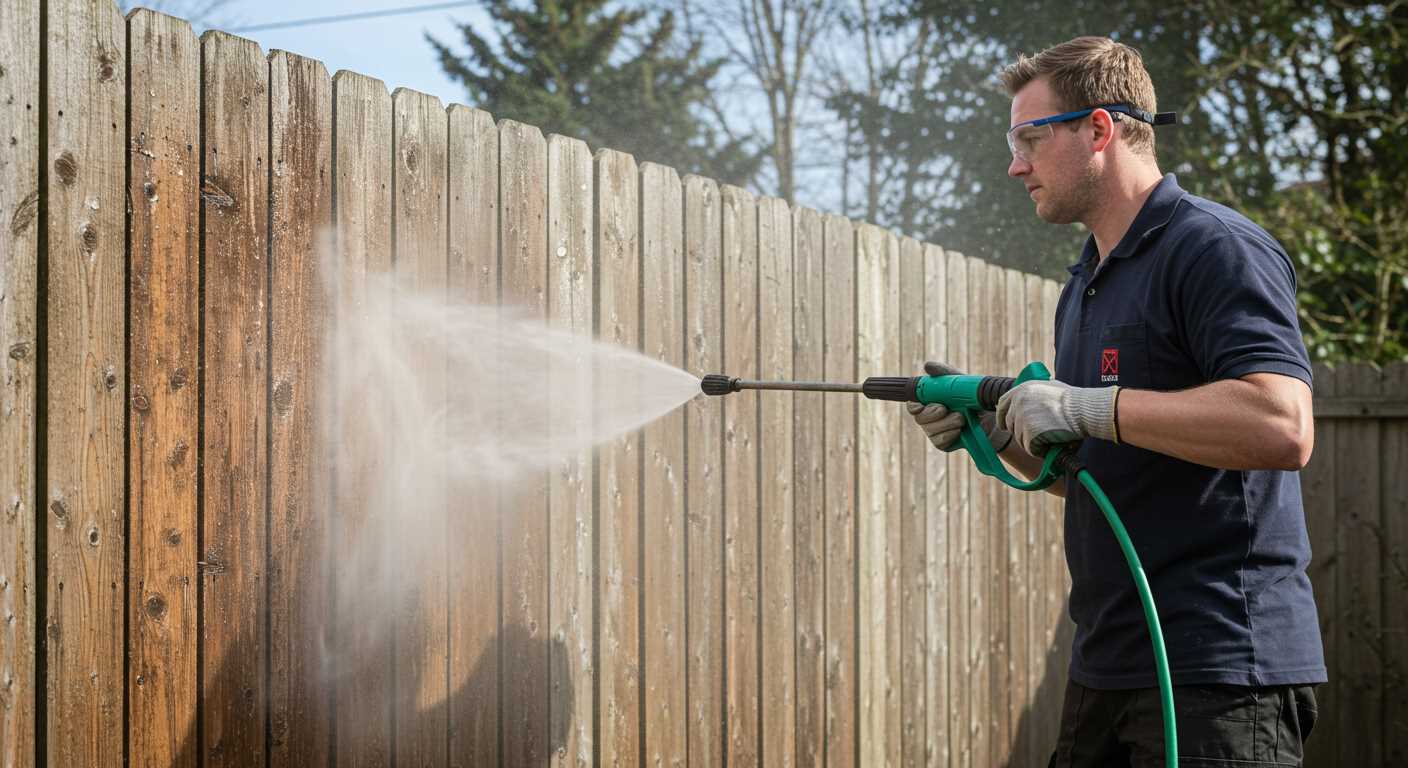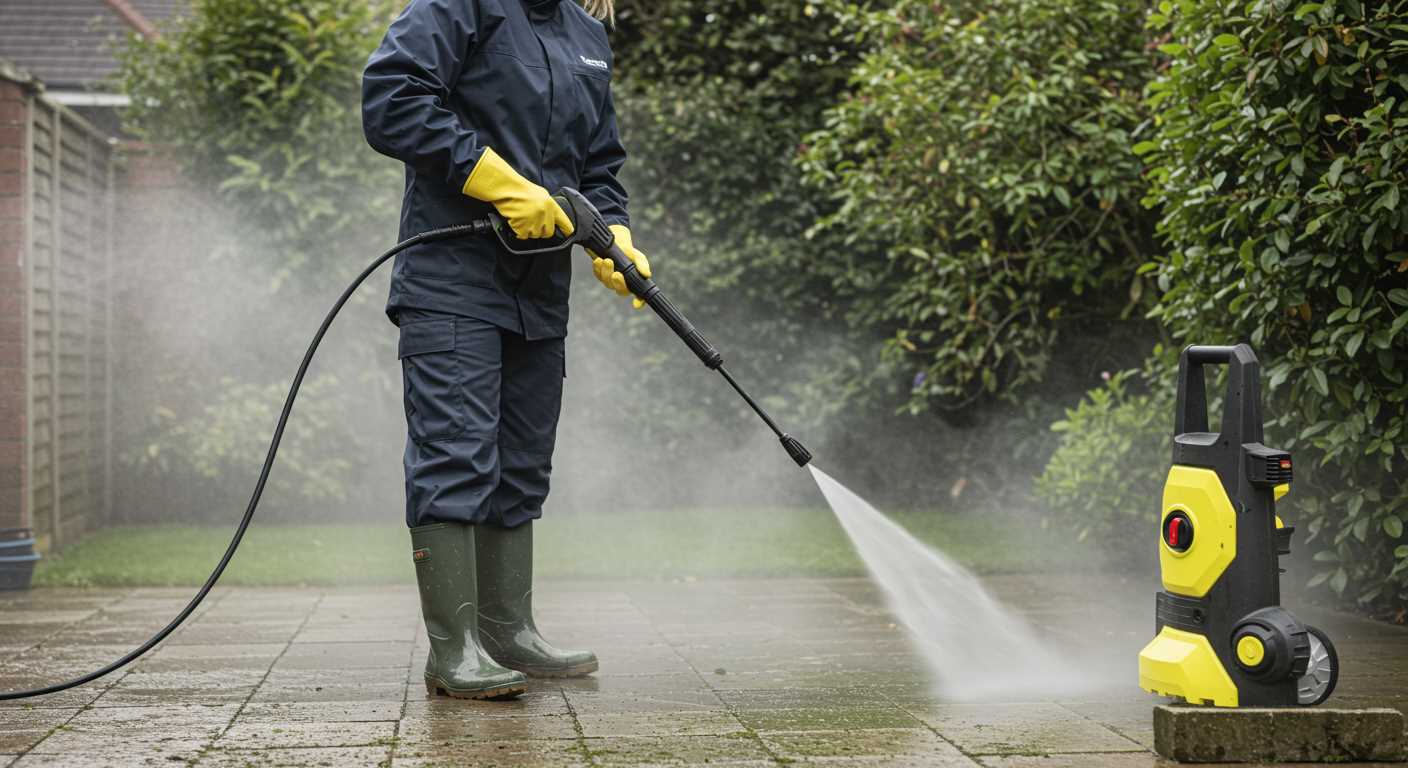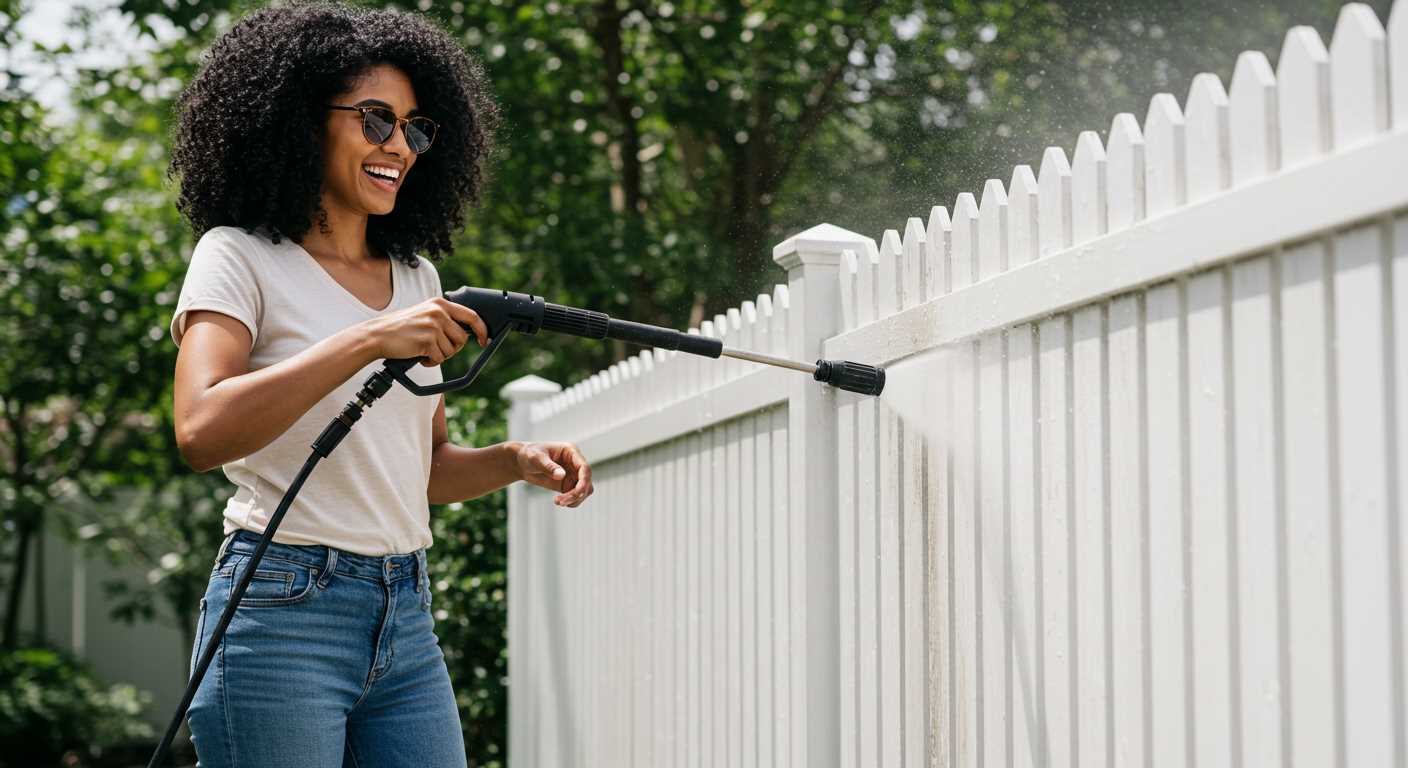



To tackle the issue of inconsistent operation right from the start, check the water supply. Ensuring a steady and unrestricted flow from the source is paramount, as low pressure can result in erratic performance. Clear any debris from the inlet filter and ensure hoses are free of kinks or blockages.
Next, inspect the unloader valve; this component plays a critical role in managing pressure within the system. A faulty or improperly adjusted unloader may cause irregular cycles. Adjust it according to the manufacturer’s instructions, or consider replacing it if necessary.
Another common culprit is the spray nozzle. Blockages or wear in the nozzle can disrupt water flow, leading to unstable operation. Verify that the nozzle is clean and undamaged. Switching to a different nozzle can sometimes resolve the issue, particularly if you’re using a fine spray when a wider pattern would suffice.
Moreover, evaluating the pump oil level is essential. Insufficient lubrication can result in mechanical issues that manifest as pressure fluctuations. Regular maintenance, including changing the oil, enhances performance and longevity. Pay special attention to any unusual sounds during operation, as these can indicate a deeper problem requiring immediate attention.
Identifying the Reasons for Inconsistent Performance in High-Pressure Cleaners
Begin by checking the water supply. Ensure that it is uninterrupted and has sufficient flow. A restricted inlet can lead to fluctuations in output.
Inspect the filter at the water intake. Debris accumulation can obstruct the flow, resulting in pressure drops. Cleaning or replacing it is essential for optimal operation.
Verify the connections between hoses and nozzles. Loose or damaged fittings may cause leaks, disrupting consistent performance. Tightening connections or replacing faulty components is critical.
Examine the nozzle for blockages or wear. A damaged or clogged nozzle can hinder water flow, leading to erratic pressure levels. Cleaning or replacing the nozzle should resolve the issue.
Assess the pump’s condition. Lack of oil or wear and tear can cause inconsistent pressure outputs. Regular maintenance, including oil changes and part inspections, will ensure longevity and reliability.
Ensure that the machine is primed properly before use. Air trapped in the system can lead to surges. Allow the system to run briefly to clear any air pockets.
Lastly, review the specifications of the unit. Using nozzles or hoses not suited for the model can result in performance issues. Always match accessories with the manufacturer’s recommendations to maintain efficiency.
Understanding Pressure Washer Mechanics
Check the inlet filter. A clogged filter can limit water flow, causing erratic performance. Regular cleaning of this component prevents buildup of debris.
Inspect the unloader valve. Its malfunction can result in pressure fluctuations. Ensure it operates smoothly, allowing the system to regulate pressure effectively.
Examine the pump for wear or damage. Look for leaks or unusual noises that might indicate mechanical failures. Replacing worn parts can restore consistent operation.
Monitor the water supply. Low levels or interruptions in flow lead to inconsistent pressure. Always ensure a stable, adequate water source is connected.
Review the hose’s condition. Kinks, cracks, or blockages can create back pressure that affects performance. Keeping hoses in good shape is critical for optimal function.
Assess the nozzle size and type. An incorrect nozzle can alter the intended spray pattern and affect pressure. Using the appropriate nozzle for specific tasks enhances efficiency.
Consider the distance from the surface being cleaned. Too far or too close can impact pressure delivery. Maintaining an optimal distance ensures effective cleaning without damaging surfaces.
Check the engine or motor if the unit is gas or electric. Any inconsistencies in power output will lead to pressure variations. Routine maintenance can help in diagnosing potential issues early.
Keep an eye on the seals and gaskets. Worn or damaged seals can cause leaks, resulting in decreased performance. Regular inspections and replacements are essential for maintaining integrity.
Identifying Common Signs of Surging

To diagnose fluctuations in performance, observe the following indicators that often accompany these issues:
- Inconsistent Water Flow: Noticeable changes in the water output, such as alternating between strong and weak streams, often signal underlying problems.
- Unusual Noise: A hissing or sputtering sound during operation may indicate air getting into the system or blockages affecting the water supply.
- Pressure Gauge Instability: If the gauge fluctuates erratically, this can suggest issues with the pump or connections.
- Frequent Stalling: If the machine stops intermittently, it may be due to inadequate fuel or improper settings.
- Excess Vibration: Unusual shaking during use can point to a misaligned pump or worn components.
Troubleshooting Steps
Follow this sequence to isolate issues:
- Inspect all hoses and connections for leaks or kinks that may disrupt water flow.
- Check the filter for debris, ensuring a clear path for water.
- Examine the inlet valve, as blockages here can lead to performance drops.
- Assess the nozzle for clogs; a restricted nozzle can cause pressure inconsistencies.
Identifying these symptoms early can save time and enhance the longevity of your equipment. Regular maintenance checks are advisable to prevent these occurrences.
Checking Water Supply Issues
Confirm the availability of a steady water source. Use a garden hose with a minimum diameter of 3/4 inch for optimal flow. Check that water pressure is adequate; some models require a minimum of 20 PSI.
Inspect for kinks or blockages in the hose, as these can drastically reduce flow. Clear any debris from the water inlet filter or screen, which might impede water intake.
Evaluate the connection between the hose and the machine. Ensure it is secure and free from leaks that can disrupt the water supply.
If using a water tank, verify that the tank is full and that the outlet hose facilitates proper drainage. Always ensure that the strainer is clean if you are drawing water directly from a body of water.
Here’s a checklist to assist in troubleshooting water supply issues:
| Action | Status |
|---|---|
| Check water source pressure | ✔ / ✖ |
| Inspect the garden hose for kinks | ✔ / ✖ |
| Clean inlet filter | ✔ / ✖ |
| Secure connections | ✔ / ✖ |
| Verify the water tank is full | ✔ / ✖ |
| Check strainer for debris | ✔ / ✖ |
After addressing these aspects, reassess the functionality. Any inconsistencies should lead you back to the source for further investigation. Regular checks can prevent minor issues from escalating into larger problems.
Examining the High-Pressure Hose for Blockages
Inspecting the high-pressure hose is crucial to resolving irregular operation. Begin by disconnecting the hose from both the machine and the nozzle to eliminate any pressure. Examine the entire length for kinks, twists, or visible damage that can restrict flow.
Next, check for obstructions inside the hose. Use a flexible, soft brush or a long pipe cleaner to remove any debris, dirt, or sediment that may be lodged within. If persistent blockages are suspected, consider using a thin, straight object to gently probe and clear the interior.
Testing Water Flow
.jpg)
After ensuring the hose is clear, reconnect it and test the machine without a nozzle attached to gauge water flow. An unexpected inconsistency in the stream indicates a potential issue either with the hose or the connections. If the flow appears irregular, repeat the inspection process and verify connections are secure and leak-free.
Replacing the Hose
If blockages and flow issues persist despite thorough cleaning, it may be time to consider replacing the hose. A new, high-quality hose can significantly improve performance and eliminate surging symptoms. Ensure compatibility with your equipment’s specifications for optimal outcomes.
Assessing the Spray Gun and Nozzle Condition
Begin by inspecting the spray gun for any signs of wear, damage, or blockages. A clogged or worn-out nozzle can create inconsistent water flow, resulting in fluctuations. Ensure that the nozzle is tightened securely to prevent air leaks. If you notice any cracks or deformities, consider replacing the component.
Cleaning the Nozzle
Using a small wire or a soft brush, clean the nozzle thoroughly. Residue build-up can restrict water passage and impact performance. For stubborn blockages, soak the nozzle in a mixture of vinegar and water to dissolve deposits, then rinse thoroughly. This can restore its functionality significantly.
Testing the Spray Gun

With everything assembled, activate the unit and check for steady water flow from the spray gun. An intermittent spray indicates a problem either with the nozzle or the spray gun itself. If necessary, dismantle the spray gun for a detailed inspection. Look for internal obstructions and ensure the seals are intact. Reassembly should be done carefully, ensuring that all parts fit snugly together.
Consistent maintenance of these components can prevent interruptions and enhance the overall cleaning experience. As a former consultant with extensive practical knowledge, I often found that minor adjustments to the spray gun and nozzle could resolve significant issues that users faced.
Investigating Pump Problems and Malfunctions
Check for any signs of wear or damage in the pump components. Assess the seals and gaskets first; if these parts are deteriorating, they may cause air leaks, leading to inconsistent performance. Replacing them can resolve many issues stemming from pressure fluctuations.
Inspect the pump for proper lubrication. Many models require periodic maintenance to ensure that internal parts move smoothly. If lubrication is insufficient or the wrong type is used, it can lead to increased friction and overheating, resulting in erratic operation.
Examine the pump’s inlet and outlet valves. If either valve is stuck or not sealing properly, it can cause pressure loss and surging. Cleaning or replacing the valves can restore normal function.
Observe the pump’s RPM (revolutions per minute) during operation. If the motor speed is inconsistent, it might indicate electrical issues or problems with the drive system. Ensure all electrical connections are secure, and consider testing the motor’s performance with a multimeter.
Test the pump’s check valve as well. A malfunctioning check valve can allow backflow, affecting pressure stability. If this component is not functioning correctly, replacing it should rectify the situation.
Finally, consider the possibility of cavitation. This occurs when there isn’t enough water entering the pump, causing the liquid to vaporise and lead to pressure fluctuations. Ensuring a consistent and adequate water supply can mitigate this issue and enhance overall performance.
Evaluating the Unloader Valve Functionality
Inspect the unloader valve for blockages or wear. A malfunctioning unloader can cause erratic pressure and lead to instability in operation. Disassemble the component carefully, and check for debris, which can disrupt the flow of water. Clean or replace the valve if necessary.
Observe the spring mechanism within the unloader. It should return freely to its original position. A stuck or worn spring may prevent proper function. If the spring appears damaged or overly compressed, replace it to restore performance.
While reassembling, ensure all connections are secure. Leaks at the unloader can result in loss of pressure and inconsistent output. Tighten screws and fittings, and use thread sealant if needed to prevent water from escaping.
Test the unloader after servicing. Run the equipment and monitor for steady operation. If issues persist, consider consulting the manufacturer’s guidelines or contacting a professional technician for in-depth analysis.
Maintaining Your Equipment to Prevent Fluctuations
Regular upkeep is key to ensuring smooth performance. Focus on the following areas to minimise interruptions:
Routine Cleaning

- Clean filters frequently to prevent clogging.
- Remove debris and buildup from the inlet screen to ensure unobstructed water flow.
- Flush the system with fresh water after usage to prevent residual build-up from affecting future operations.
Regular Inspection
- Inspect hoses for cracks, kinks, or blockages that could impede water flow.
- Examine connections and fittings for leaks. Tighten them as necessary to maintain pressure.
- Check the condition of the spray gun and nozzle regularly. Replace any worn or damaged components immediately.
Conducting these checks consistently can significantly reduce the chances of fluctuations. Keeping everything in tip-top shape will ensure optimal functionality. Additionally, following the manufacturer’s maintenance schedule will enhance the longevity of the equipment and improve operational reliability.
Storage and Seasonal Care
- Store the unit in a cool, dry place to prevent damage from weather conditions.
- Winterise the unit by draining water and adding antifreeze to prevent freezing in colder climates.
- Ensure all cleaning agents are stored properly and are compatible with your equipment to avoid adverse effects.
By taking these proactive steps, I’ve seen many users enjoy efficient and consistent performance, allowing them to tackle their cleaning tasks with confidence and ease.
FAQ:
What causes a pressure washer to surge when it is turned on?
A pressure washer may surge due to several factors. One common reason is a clogged nozzle, which restricts water flow and causes the pump to cycle on and off repeatedly. Another possibility is that the water supply is insufficient; if the pressure washer is not getting enough water, it can lead to surging. Additionally, air in the system, often due to improper priming or a leak in the inlet hose, can also create a surging effect. Regular maintenance, such as cleaning filters and checking for leaks, can help prevent these issues.
How can I fix the surging issue in my pressure washer?
To fix surging in a pressure washer, first check the nozzle for clogs; clean or replace it if necessary. Next, ensure there is adequate water supply; clear any kinks in the hose, and verify that the connection to the water source is secure and unrestricted. If air is trapped in the system, attempt to purge it by running the washer without a load for a short time. If the problem persists, inspect the inlet hose for leaks or cracks, as these can introduce air into the system. If needed, consult the manufacturer’s manual for further guidance or professional assistance.
Is it safe to continue using a pressure washer that is surging?
Using a pressure washer that is surging is not recommended, as it can lead to further damage to the unit or create an unsafe situation. Surging often indicates that the system is not functioning correctly, which can cause strain on the pump and other components. Continuing to operate a malfunctioning machine might not only worsen the existing problem but could also pose a risk of injury if the pressure fluctuates unexpectedly. It’s advisable to address the issue before using the pressure washer again to ensure safety and maintain the equipment’s longevity.







